Chrysler 2013 Annual Report Download - page 39
Download and view the complete annual report
Please find page 39 of the 2013 Chrysler annual report below. You can navigate through the pages in the report by either clicking on the pages listed below, or by using the keyword search tool below to find specific information within the annual report.-
 1
1 -
 2
2 -
 3
3 -
 4
4 -
 5
5 -
 6
6 -
 7
7 -
 8
8 -
 9
9 -
 10
10 -
 11
11 -
 12
12 -
 13
13 -
 14
14 -
 15
15 -
 16
16 -
 17
17 -
 18
18 -
 19
19 -
 20
20 -
 21
21 -
 22
22 -
 23
23 -
 24
24 -
 25
25 -
 26
26 -
 27
27 -
 28
28 -
 29
29 -
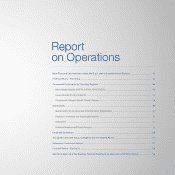 30
30 -
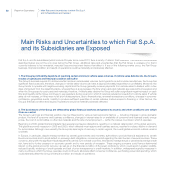 31
31 -
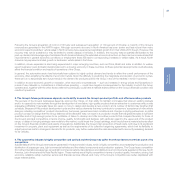 32
32 -
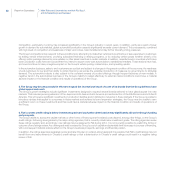 33
33 -
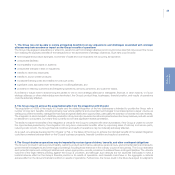 34
34 -
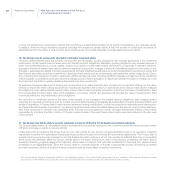 35
35 -
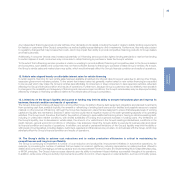 36
36 -
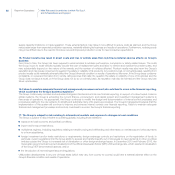 37
37 -
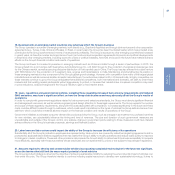 38
38 -
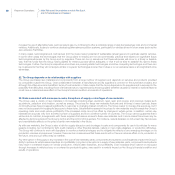 39
39 -
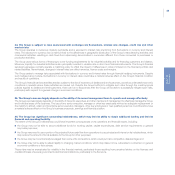 40
40 -
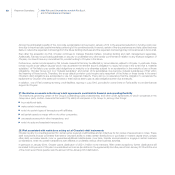 41
41 -
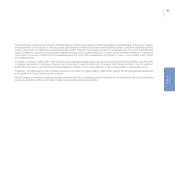 42
42 -
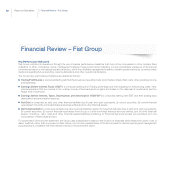 43
43 -
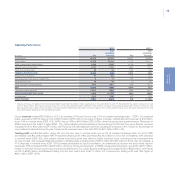 44
44 -
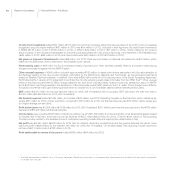 45
45 -
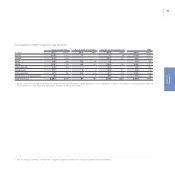 46
46 -
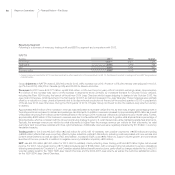 47
47 -
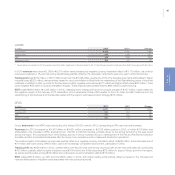 48
48 -
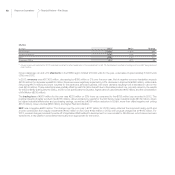 49
49 -
 50
50 -
 51
51 -
 52
52 -
 53
53 -
 54
54 -
 55
55 -
 56
56 -
 57
57 -
 58
58 -
 59
59 -
 60
60 -
 61
61 -
 62
62 -
 63
63 -
 64
64 -
 65
65 -
 66
66 -
 67
67 -
 68
68 -
 69
69 -
 70
70 -
 71
71 -
 72
72 -
 73
73 -
 74
74 -
 75
75 -
 76
76 -
 77
77 -
 78
78 -
 79
79 -
 80
80 -
 81
81 -
 82
82 -
 83
83 -
 84
84 -
 85
85 -
 86
86 -
 87
87 -
 88
88 -
 89
89 -
 90
90 -
 91
91 -
 92
92 -
 93
93 -
 94
94 -
 95
95 -
 96
96 -
 97
97 -
 98
98 -
 99
99 -
 100
100 -
 101
101 -
 102
102 -
 103
103 -
 104
104 -
 105
105 -
 106
106 -
 107
107 -
 108
108 -
 109
109 -
 110
110 -
 111
111 -
 112
112 -
 113
113 -
 114
114 -
 115
115 -
 116
116 -
 117
117 -
 118
118 -
 119
119 -
 120
120 -
 121
121 -
 122
122 -
 123
123 -
 124
124 -
 125
125 -
 126
126 -
 127
127 -
 128
128 -
 129
129 -
 130
130 -
 131
131 -
 132
132 -
 133
133 -
 134
134 -
 135
135 -
 136
136 -
 137
137 -
 138
138 -
 139
139 -
 140
140 -
 141
141 -
 142
142 -
 143
143 -
 144
144 -
 145
145 -
 146
146 -
 147
147 -
 148
148 -
 149
149 -
 150
150 -
 151
151 -
 152
152 -
 153
153 -
 154
154 -
 155
155 -
 156
156 -
 157
157 -
 158
158 -
 159
159 -
 160
160 -
 161
161 -
 162
162 -
 163
163 -
 164
164 -
 165
165 -
 166
166 -
 167
167 -
 168
168 -
 169
169 -
 170
170 -
 171
171 -
 172
172 -
 173
173 -
 174
174 -
 175
175 -
 176
176 -
 177
177 -
 178
178 -
 179
179 -
 180
180 -
 181
181 -
 182
182 -
 183
183 -
 184
184 -
 185
185 -
 186
186 -
 187
187 -
 188
188 -
 189
189 -
 190
190 -
 191
191 -
 192
192 -
 193
193 -
 194
194 -
 195
195 -
 196
196 -
 197
197 -
 198
198 -
 199
199 -
 200
200 -
 201
201 -
 202
202 -
 203
203 -
 204
204 -
 205
205 -
 206
206 -
 207
207 -
 208
208 -
 209
209 -
 210
210 -
 211
211 -
 212
212 -
 213
213 -
 214
214 -
 215
215 -
 216
216 -
 217
217 -
 218
218 -
 219
219 -
 220
220 -
 221
221 -
 222
222 -
 223
223 -
 224
224 -
 225
225 -
 226
226 -
 227
227 -
 228
228 -
 229
229 -
 230
230 -
 231
231 -
 232
232 -
 233
233 -
 234
234 -
 235
235 -
 236
236 -
 237
237 -
 238
238 -
 239
239 -
 240
240 -
 241
241 -
 242
242 -
 243
243 -
 244
244 -
 245
245 -
 246
246 -
 247
247 -
 248
248 -
 249
249 -
 250
250 -
 251
251 -
 252
252 -
 253
253 -
 254
254 -
 255
255 -
 256
256 -
 257
257 -
 258
258 -
 259
259 -
 260
260 -
 261
261 -
 262
262 -
 263
263 -
 264
264 -
 265
265 -
 266
266 -
 267
267 -
 268
268 -
 269
269 -
 270
270 -
 271
271 -
 272
272 -
 273
273 -
 274
274 -
 275
275 -
 276
276 -
 277
277 -
 278
278 -
 279
279 -
 280
280 -
 281
281 -
 282
282 -
 283
283 -
 284
284 -
 285
285 -
 286
286 -
 287
287 -
 288
288 -
 289
289 -
 290
290 -
 291
291 -
 292
292 -
 293
293 -
 294
294 -
 295
295 -
 296
296 -
 297
297 -
 298
298 -
 299
299 -
 300
300 -
 301
301 -
 302
302 -
 303
303 -
 304
304 -
 305
305 -
 306
306 -
 307
307 -
 308
308 -
 309
309 -
 310
310 -
 311
311 -
 312
312 -
 313
313 -
 314
314 -
 315
315 -
 316
316 -
 317
317 -
 318
318 -
 319
319 -
 320
320 -
 321
321 -
 322
322 -
 323
323 -
 324
324 -
 325
325 -
 326
326 -
 327
327 -
 328
328 -
 329
329 -
 330
330 -
 331
331 -
 332
332 -
 333
333 -
 334
334 -
 335
335 -
 336
336 -
 337
337 -
 338
338 -
 339
339 -
 340
340 -
 341
341 -
 342
342 -
 343
343 -
 344
344 -
 345
345 -
 346
346 -
 347
347 -
 348
348 -
 349
349 -
 350
350 -
 351
351 -
 352
352 -
 353
353 -
 354
354 -
 355
355 -
 356
356 -
 357
357 -
 358
358 -
 359
359 -
 360
360 -
 361
361 -
 362
362 -
 363
363 -
 364
364 -
 365
365 -
 366
366
 |
 |

38 Report on Operations Main Risks and Uncertainties to which Fiat S.p.A.
and its Subsidiaries are Exposed
increase the use of alternative fuels, such as natural gas, by continuing to offer a complete range of dual-fuel passenger cars and commercial
vehicles. Additionally, it plans to continue developing alternative propulsion systems, particularly for vehicles driven in urban areas (such as the
zero-emission Fiat 500e).
In many cases, technological and cost barriers limit the mass-market potential of sustainable natural gas and in particular electric vehicles.
In some other cases the technologies that the Group plans to employ are not yet commercially practical and depend on significant future
technological advances by the Group and by suppliers. There can be no assurance that these advances will occur in a timely or feasible
way, that the funds that the Group has budgeted for these purposes will be adequate, or that it will be able to establish its right to these
technologies. Further, the Group’s competitors and others are pursuing similar technologies and other competing technologies and there can
be no assurance that they will not acquire similar or superior technologies sooner than it does or on an exclusive basis or at a significant price
advantage.
22. The Group depends on its relationships with suppliers
The Group purchases raw materials and components from a large number of suppliers and depends on services and products provided
by companies outside the Group. Close collaboration between a manufacturer and its suppliers is common in the automotive industry and
although this offers economic benefits in terms of cost reduction, it also means that the Group depends on its suppliers and is exposed to the
possibility that difficulties, including those of a financial nature, experienced by those suppliers (whether caused by internal or external factors)
could have a material adverse effect on the Group’s financial condition and results of operations.
23. Risks associated with increases in costs, disruptions of supply or shortages of raw materials
The Group uses a variety of raw materials in its business including steel, aluminum, lead, resin and copper, and precious metals such
as platinum, palladium and rhodium, as well as energy. The prices for these raw materials fluctuate and at times in recent periods, these
commodity prices have increased significantly in response to changing market conditions. The Group seeks to manage this exposure, but it
may not be successful in hedging its exposure to these risks. Substantial increases in the prices for raw materials would increase the Group’s
operating costs and could reduce profitability if the increased costs cannot be offset by changes in vehicle prices. In addition, certain raw
materials are sourced only from a limited number of suppliers and from a limited number of countries. The Group cannot guarantee that it
will be able to maintain arrangements with these suppliers that assure access to these raw materials, and in some cases this access may be
affected by factors outside of the Group’s control and the control of its suppliers. For instance, natural disasters or civil unrest may have severe
and unpredictable effects on the price of certain raw materials in the future.
As with raw materials, the Group is also at risk for supply disruption and shortages in parts and components for use in its vehicles for many
reasons including, but not limited to tight credit markets or other financial distress, natural or man-made disasters, or production difficulties.
The Group will continue to work with suppliers to monitor potential shortages and to mitigate the effects of any emerging shortages on its
production volumes and revenues; however, there can be no assurances that these events will not have an adverse effect on its production in
the future, and any such effect may be material.
Any interruption in the supply or any increase in the cost of raw materials, parts, components and systems could negatively impact the Group’s
ability to achieve its vehicle sales objectives and profitability. Long-term interruptions in supply of raw materials, parts, components and systems
may result in a material impact on vehicle production, vehicle sales objectives, and profitability. Cost increases which cannot be recouped
through increases in vehicle prices, or countered by productivity gains, may result in a material impact on the Group’s financial condition and
results of operations.
